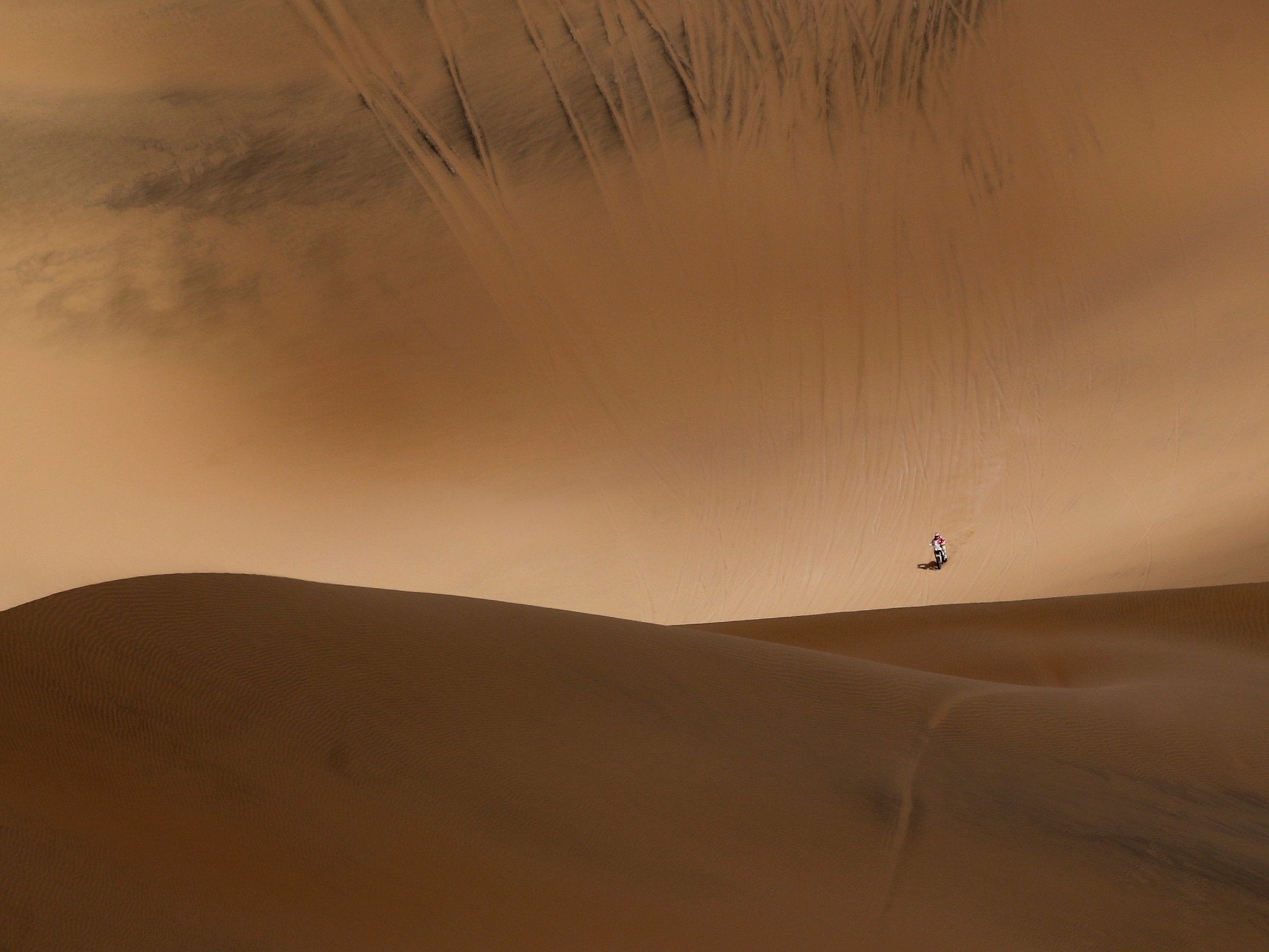Rallying: The Dakar, a world of sand and solitude
Carlos Jasso explains why, as a photographer, he loves shooting the Dakar Rally

The Dakar Rally is a race like no other, a two-week long endurance challenge across Peru and some of the harshest terrain and conditions on Earth.
This year’s event, which finished in Lima on 17 January, spanned thousands of kilometres with motorcycles, cars and trucks racing across vast deserts and towering dunes, from the Andes to the shores of the Pacific Ocean.
As a photographer, I was lucky enough to have access to a helicopter to capture the race, hanging out of its open door on a harness in order to shoot.
I like the abstract images best – the detail created by a motorcycle accelerating, the sand thrown up and combined with beautiful light so that it looks almost like a wave.
You have to have the camera exposures pre-set to be ready for the action, but the light is constantly shifting as clouds move across the sky.
Rallying – The Dakar, a world of sand and solitude
Show all 15You point the camera and expose for the highlights and hope the vehicle comes into the frame and drives between the shadows of the clouds.
You start reading the dunes ahead of reaching them: “That’s a beautiful golden light, I’m going to shoot a landscape.” Or, “These are great shadows, I’m going to play with that.”
You can feel like a grain of sand in those massive dunes, and everything can change so quickly. Every choice you make is a gamble — the exposure you set, the dune you choose to climb.
You have to make a decision about where to go based on the route coordinates that the organisers give you. But that is no guarantee of a perfect vantage point, as vehicles do not follow a set track.
When the car or helicopter drops you off, you have to read the track marks in the sand, and predict where you will get the shot you want.
Subscribe to Independent Premium to bookmark this article
Want to bookmark your favourite articles and stories to read or reference later? Start your Independent Premium subscription today.

Join our commenting forum
Join thought-provoking conversations, follow other Independent readers and see their replies